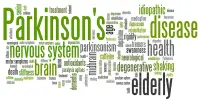Anxiety is characterized by muscle tension and avoidance behavior in response to the anticipation of a future concern. Fear is an emotional reaction to an impending threat and is more associated with a fight or flight response – either staying to fight or fleeing to avoid danger. People suffering from anxiety disorders may try to avoid situations that trigger or worsen their symptoms. Job performance, schoolwork, and personal relationships can all suffer as a result.
A recent imaging study led by a scientist at The University of Texas at Dallas discovered early risk factors linked to children’s temperament as well as a neural process that could predict whether a person will develop depression and anxiety in adolescence and early adulthood. The study, published in JAMA Psychiatry, tracked a cohort of 165 individuals from 4 months old, between 1989 and 1993, through age 26.
Dr. Alva Tang, assistant professor of psychology in the School of Behavioral and Brain Sciences and the study’s corresponding author, discovered that people who are more inhibited in early childhood and who also do not respond typically to potential rewards as adolescents are more likely to develop depression later in life than anxiety.
Tang, who conducted the research at the University of Maryland, College Park before joining UT Dallas in August, said, “The findings highlight different mechanisms in the brain and relate them to who is at greater risk for developing different mental health issues.” “These findings could help to guide the development of prevention-oriented treatments that are tailored to the individual.”
We know that inhibited children are more likely to develop anxiety disorders later in life, particularly social anxiety, which starts in late childhood to adolescence. Less is known about depression, which typically begins in young adulthood.
Dr. Alva Tang
When babies are introduced to new objects, people, or situations, some react positively and approach them without fear, while others react with caution or avoidance. This distinction distinguishes between uninhibited and inhibited behavior.
“We know that inhibited children are more likely to develop anxiety disorders later in life, particularly social anxiety, which starts in late childhood to adolescence,” Tang explained. “Less is known about depression, which typically begins in young adulthood. However, we do know that people who have had an anxiety disorder are 50% to 60% more likely to have depression later in life, so inhibited children should also be at a higher risk of depression.”
Tang’s research is unique for its characterization of the subjects’ early temperamental risks and the protracted length of time they were studied.
“To show any relation with increases in depressive symptoms over time, we have to follow subjects for decades because full-blown syndromes usually do not emerge until young adulthood,” she said.

The subjects were classified as inhibited or uninhibited as young children. They underwent functional MRIs as adolescents while performing a task to measure their brains’ reaction to anticipating rewards – in this case, trying to win money.
“We looked at the ventral striatum, a brain region well studied in terms of understanding depression in adults, to see if it’s linked to maladaptive processing in the reward centers of the brain,” Tang explained. In response to potential monetary rewards, some study participants demonstrated a blunted response in this brain region.
The researchers found that the association between inhibition at 14 to 24 months of age and worsening depressive symptoms from ages 15 to 26 was present only among those who also showed blunted activity in the ventral striatum as adolescents. There was no similar association with anxiety.
“We found that behavioral inhibition was related to worsening depressive symptoms into adulthood. This supports the assertion that this temperament shows a stronger relation to developing anxiety in adolescence, but in adulthood it is tied more strongly to depression. However, not all inhibited children develop anxiety or depression,” Tang said. “It was particularly the inhibited children who showed blunted striatal activity who were more likely to become more depressed in young adulthood.”
Tang’s previous research linked anxiety to neural networks and processes that serve attention and executive functions, whereas her current work focuses on reward and motivational centers in the brain that are linked to depression. “This study is novel in that it can separate different types of brain correlates for these various conditions,” she explained.
Tang stated that there are already interventions available for socially anxious and behaviorally inhibited children that improve social and cognitive skills. Additional interventions for these children could address motivational deficits by teaching them how to actively create environments in which they can be socially engaged with peers and seek out positive experiences.
“This may reduce the likelihood of developing depression as a result of being socially disengaged or missing out on opportunities for positive experiences,” she added.
She suggested that future research could look into the effectiveness of programs that target maladaptive reward processing in anxious youths in lowering the risk of later depression. Anxiety and depression are complex conditions that can be triggered by a variety of factors, including genetic, environmental, and other factors, according to Tang.
“Here, we show strong evidence that both early temperamental risk factors and maladaptive neurocognitive reward processing play a role in the development of depression.”
















